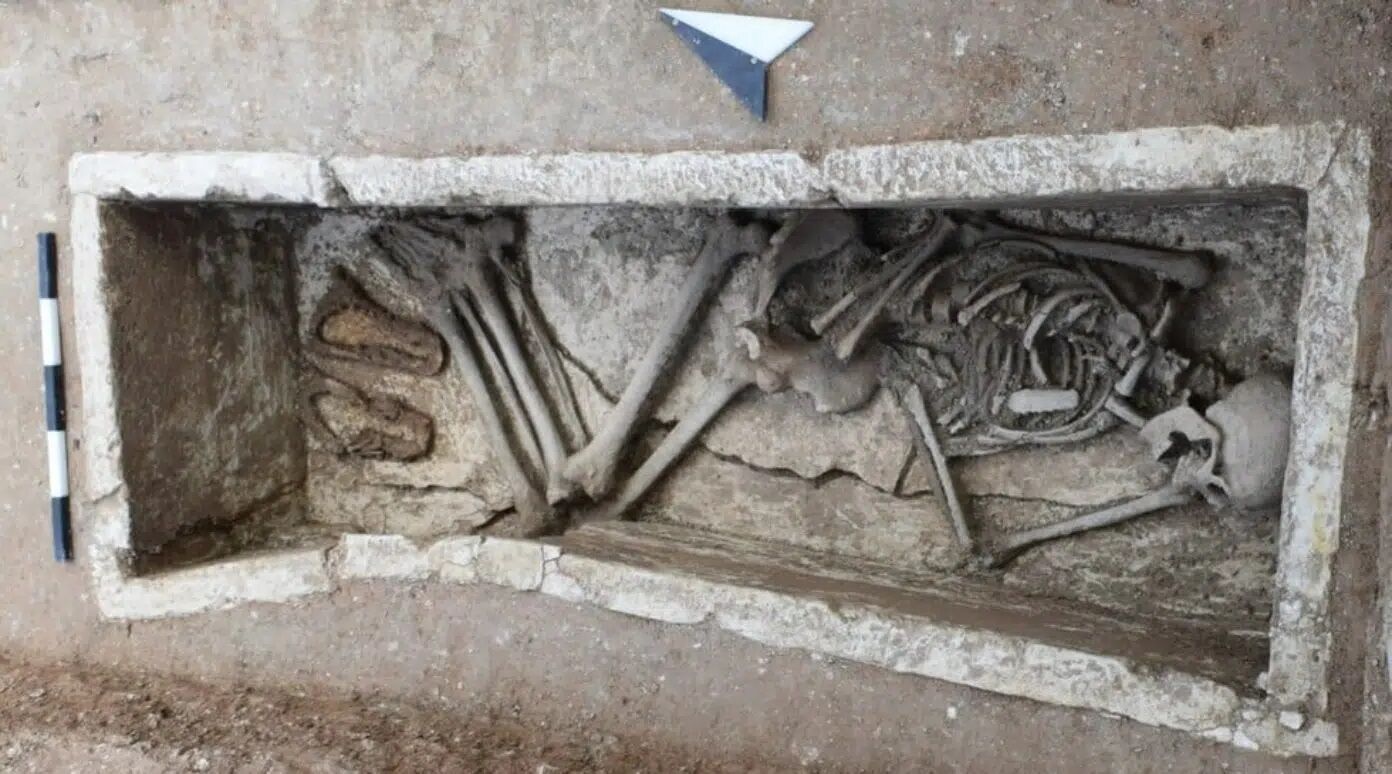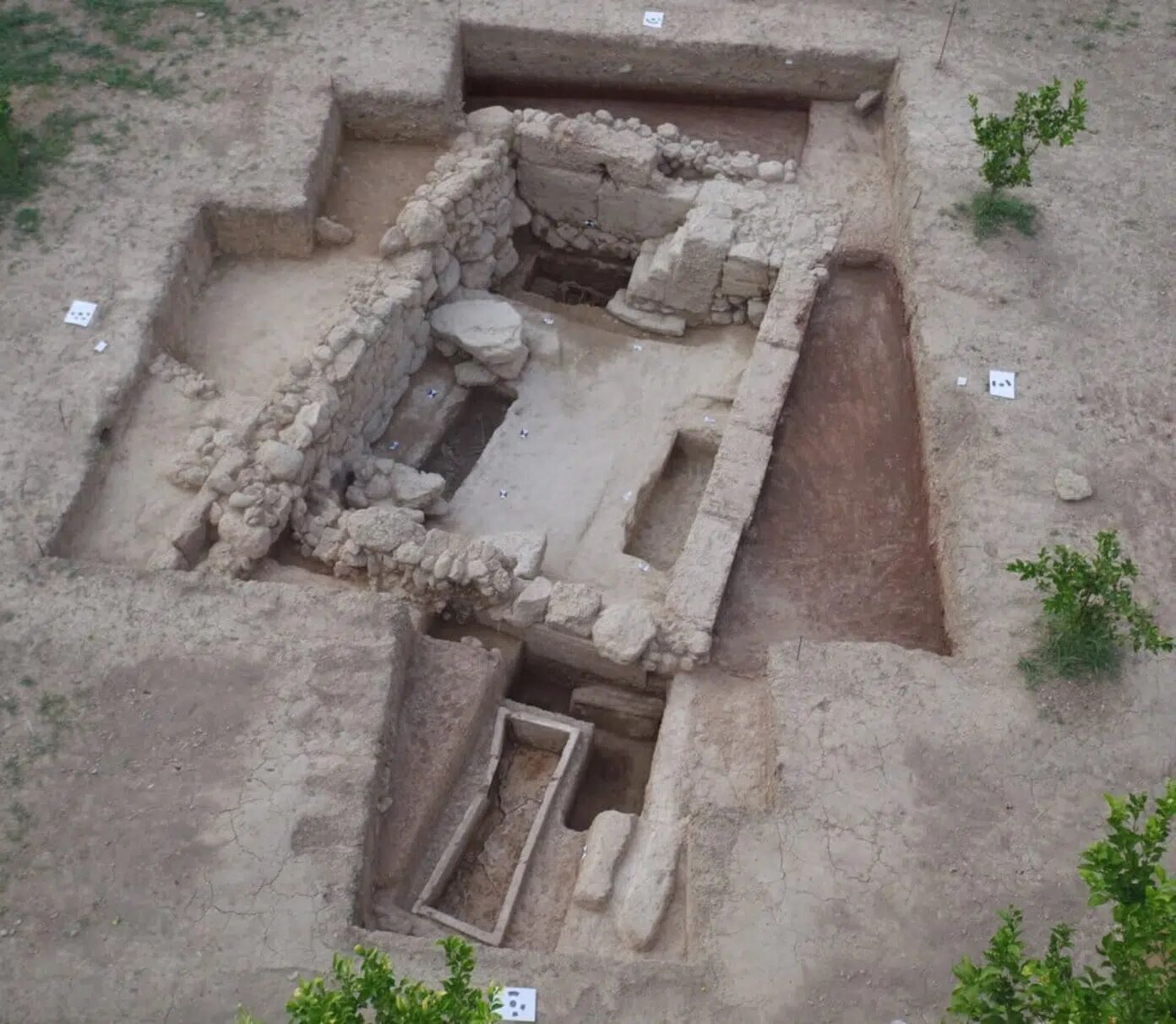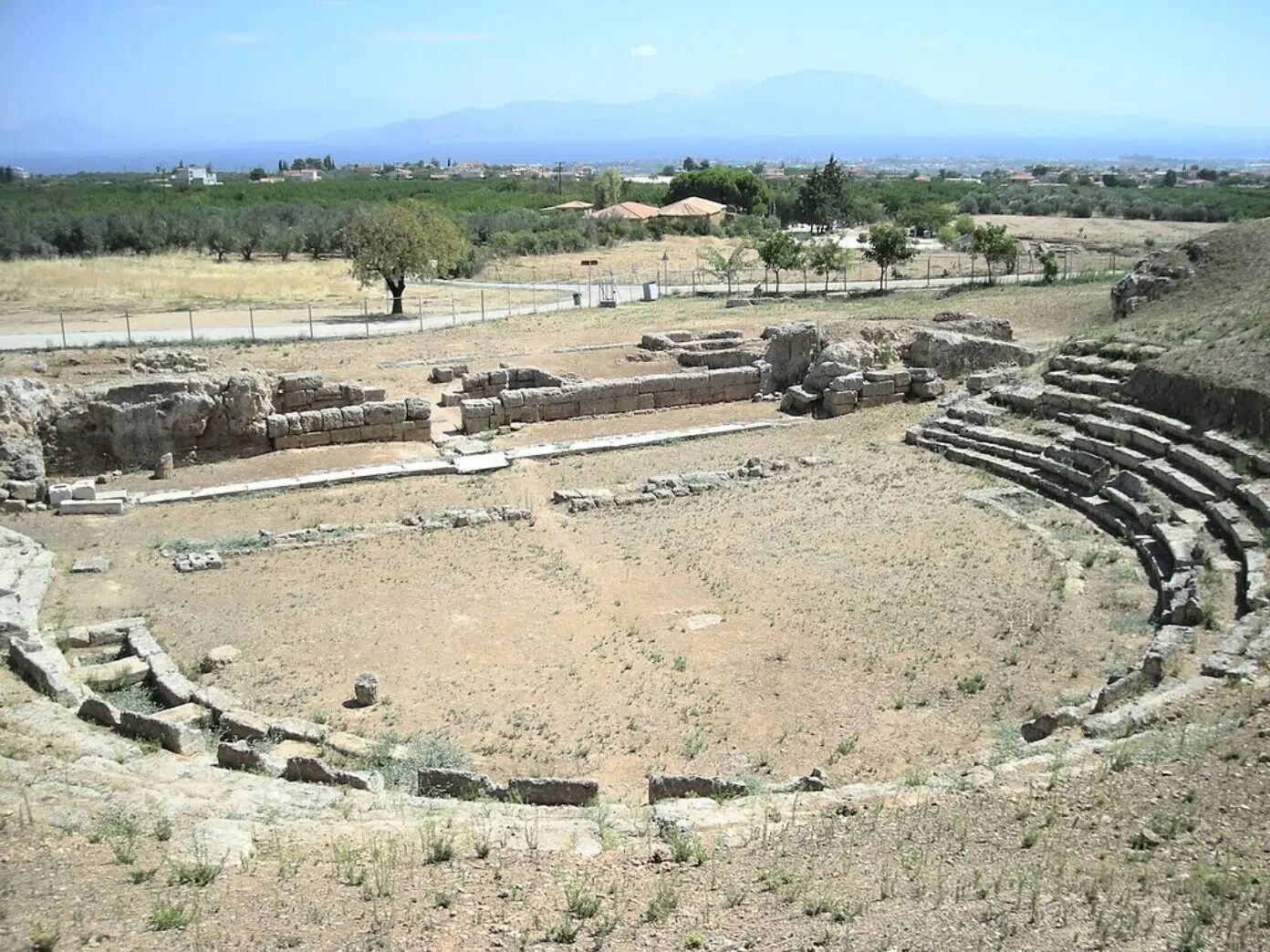A 2500-year-old grave discovered in Greece: a man was buried with his shoes (photo)

The ancient Greek city of Sikyon, located in the northern Peloponnese, may be little known, but recent archaeological excavations are revealing important clues about its history.
These excavations, which have been taking place over the past few years, have uncovered remains from the Classical and Late Classical periods, as well as extremely interesting artifacts that point to the life and culture of this ancient Greek city, GreekReporter.com writes.
Also read: Village found in England that disappeared 500 years ago for unknown reasons
One of the most impressive discoveries during these excavations was a 2500-year-old grave containing human remains. The archaeologists were surprised to find a pair of sandals next to the skeleton, which shows the details of the life and culture of this ancient people.

In addition, residential remains were discovered, consisting of house rooms and parts of home workshops. Pebble mosaic floors and walls covered with red and yellow plaster added new evidence of the luxury and elegance of this city.
The archaeological site is located to the west of the modern village of Sikion between Corinth and Achaea. Here you can find the excavated section of the Hellenistic and Roman city's Agora, theater, stadium and Roman baths, which have been restored for public viewing.


The theater, which was carved into a natural depression at the foot of the Hellenistic Acropolis, dates from the late 4th century BC. With its dimensions of 122 meters wide and 58 meters deep, it is one of the largest theaters in the Peloponnese, testifying to the greatness and importance of this city in ancient times.

Although many of the former luxuries of the city of Sikyon may be lost to time, archaeological excavations continue.
As a reminder, a 390 million-year-old forest was discovered in England. Also, an extraordinary rare ring from the 17th century was found in England.
If you want to get the latest news about the war and events in Ukraine, subscribe to our Telegram channel!
